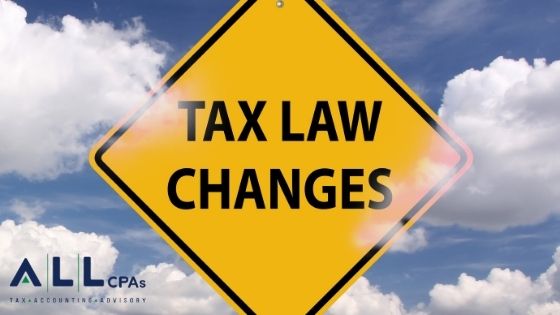
In late 2019, the Further Consolidated Appropriations Act, 2020 was signed into law. The Setting Every Community Up for Retirement Enhancement Act, also known as the SECURE Act, is part of this legislation, and affects the taxation around many employee benefit programs. Here are some of the key provisions, with effective dates noted.
Individual Contributions and Distributions
• With the passage of this Act, required minimum distributions from tax-qualified retirement programs can now begin on April 1 of the year after a retirement plan participant reaches age 72, instead of age 70 ½. Particularly, this applies to participants who reach age 70½ after December 31, 2019, and applies to both qualified plans and individual retirement accounts (IRAs).
• Also new is that individuals can now contribute to an IRA at any age; whereas before, the law prohibited individuals from contributing after the age of 70½. This new rule is effective for taxable years beginning after December 31, 2019.
• Non-spousal beneficiaries of deceased retirement plan participants must now completely withdraw account balances by the end of the 10th year following the participant’s death. This applies to both qualified plans and IRAs, and has the effect of ending the “stretch IRA” methodology that allowed people to defer distributions to non-spousal beneficiaries. This is effective for deaths after 2019.
• Participants can now take a penalty-free withdrawal of up to $5000 from a retirement program (including IRAs, 403(b) plans, 457 plans and 401(a) plans) during the one-year period following the birth or adoption of a child. The distribution will not be subject to the 10% excise tax for early distributions. This provision is effective for withdrawals made after December 31, 2019; plan amendments will be required.
• Pension plans, money purchase pension plans and governmental 457(b) plans may now allow participants to take in-service distributions beginning at age 59½, instead of the current 70½. This will be effective for plan years beginning after December 31, 2019; plan amendments will be required.
Impact on Employers/Plan Sponsors
• The tax credit available to small employers who start a tax-qualified retirement plan has been increased from $500 to a maximum of $5,000 (depending on the number of employees). This change will be effective for employer taxable years beginning after December 31, 2019.
• Small employer 401(k) plans that begin to use automatic participant enrollment will be entitled to a $500 per year tax credit for three years. This provision will be effective for employer taxable years beginning after December 31, 2019.
• For 401(k) or 403(b) plans that use automatic enrollment and escalation, the escalation percentage is increased from 10% to 15% of compensation for years after the first year in which a participant is enrolled; the first year of enrollment percentage cannot exceed 10%. This provision will be effective for employer taxable years beginning after December 31, 2019; plan amendments will be required.
• 401(k) plans will no longer be required to provide annual “safe harbor notices” to participants, although newly enrolled participants will be required to receive a notice. This will be effective for plan years beginning after December 31, 2019.
• Non-collectively bargained 401(k) plans will need to allow employees who have either one year of service (1,000 hours) or three consecutive years of 500 hours of service to participate in the plan. This will be effective for plan years beginning after December 31, 2020; plan amendments will be required.
• Penalties for failure to file information returns increase by a factor of 10—a steep increase. These changes should be noted:
-
- Failure to file an IRS Form 5500 (annual report)—from $25 per day to $250 per day, with a maximum of $150,000 (increased from $15,000).
- Failure to file the registration statement identifying separated deferred vested participants—from $1 per participant to $10 per participant, with a maximum of $50,000 (increased from $5,000).
- Failure to provide withholding notices—from $10 to $100 per failure with a maximum of $50,000 (increased from $5,000).
• Failure to file required notification of changes in a plan’s registration information increase from $1 per day to $10 per day, with the maximum penalty of $10,000 (increased from $1,000).
These changes are applicable to documents required to be provided after December 31, 2019; therefore, they apply to 2019 calendar year returns.
Recommendation
While the information above provides a brief summary of some of the most impactful and important changes that the SECURE Act brings, it’s important to consult with your tax professional for a full understanding of the impact of this Act to you and/or your plan participants.
We expect that employers may have to make amendments to their plan documents and employee communications to allow participants to take advantage of these changes, many of which take effect in 2020.
As penalties for non-filing have also significantly increased, it is imperative to work with your tax professional to ensure that all of your required filings are made in a timely fashion.
If you have any questions how the Secure Act will affect your or your business, please contact your ALL tax advisor or call us at 617-738-5200.
Recent Articles
Rising Construction Costs from COVID-19 Lead to New Bidding Approaches
Like other essential industries, t [...]
Nexus Requires Compliance and Begins by Filing Tax Returns
“Nexus” may sound like the name of [...]
The Impact You May See from the Build Back Better Act’s Tax Changes
The Build Back Better Act came und [...]




